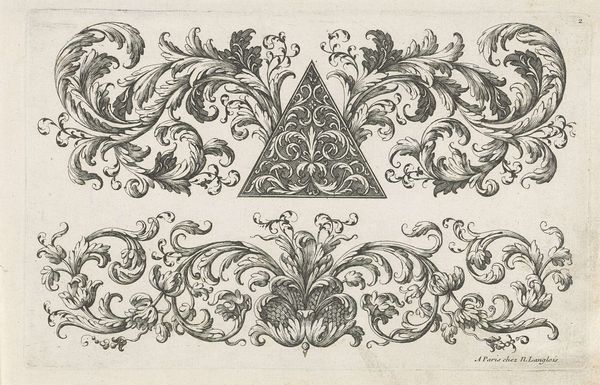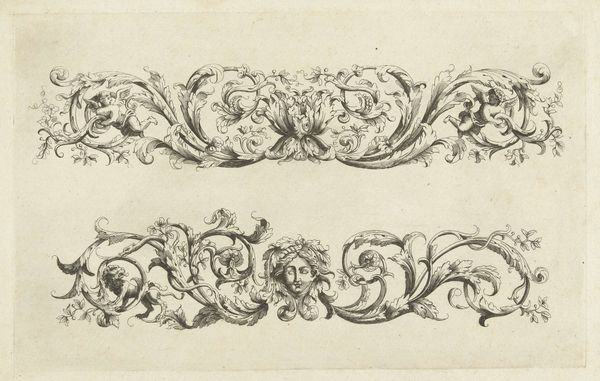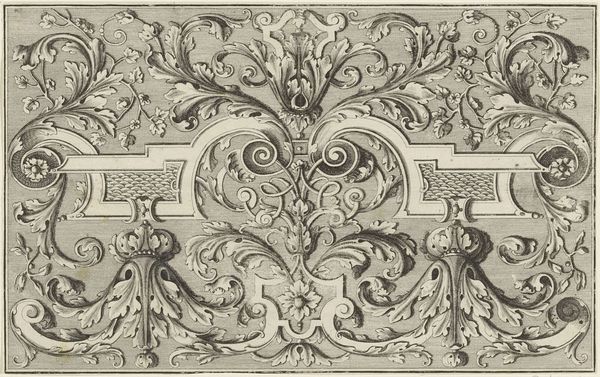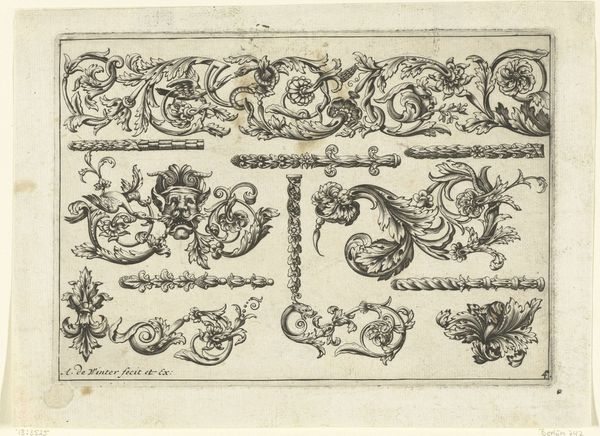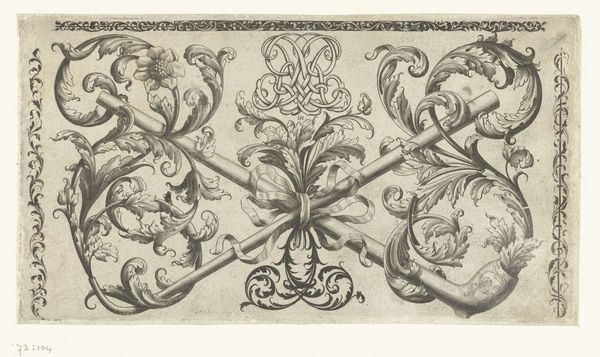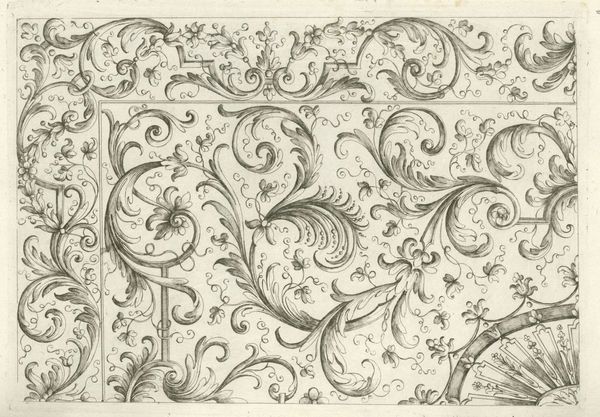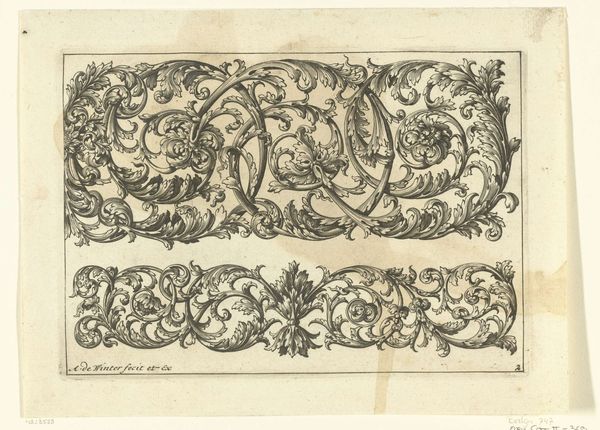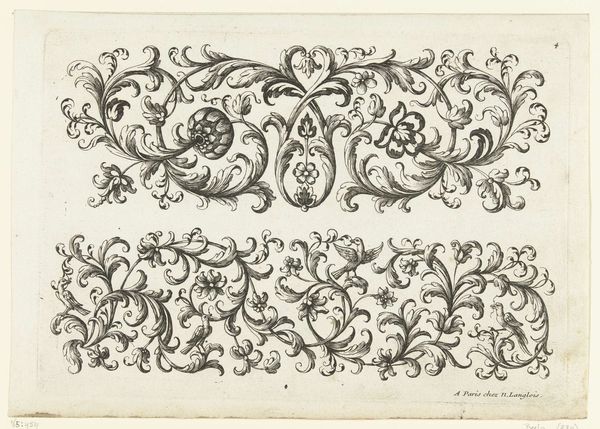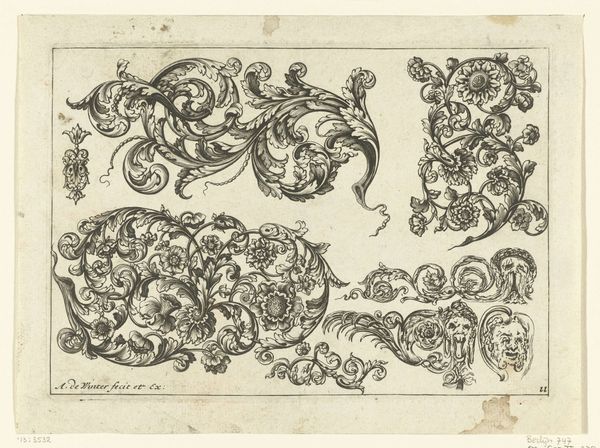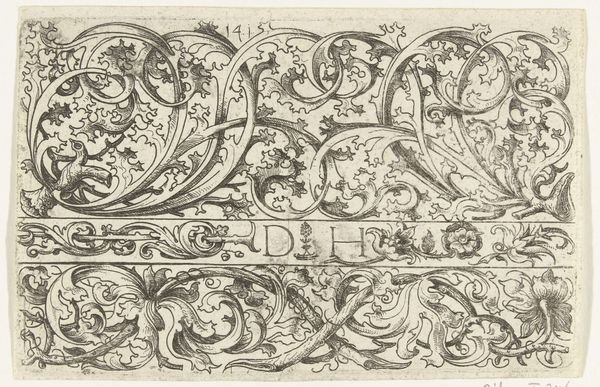
drawing, ornament, ink, engraving
#
drawing
#
ornament
#
baroque
#
pen drawing
#
old engraving style
#
ink line art
#
ink
#
geometric
#
line
#
decorative-art
#
engraving
Dimensions: height 135 mm, width 190 mm
Copyright: Rijks Museum: Open Domain
This delicate print of two friezes was made by Anthonie de Winter around the turn of the 18th century. The imagery is created through etching, where the artist uses a sharp needle to draw through a wax ground on a metal plate, which is then submerged in acid. The acid bites into the exposed metal, creating recessed lines that hold ink when printed. Look closely, and you can see the crisp, precise marks left by De Winter's hand. The swirling acanthus leaves and stylized flowers are typical of the Baroque style, meant to evoke the abundance and dynamism of nature. But don't be fooled by the naturalistic imagery; these prints were not intended as art objects. Instead, they were pattern templates for highly skilled artisans, such as cabinet makers and silversmiths. These craftsmen would translate the two-dimensional designs into three-dimensional forms, embellishing luxury goods for wealthy patrons. The print embodies the flow of ideas and skills between fine art and craft, revealing the collaborative nature of artistic production in the early modern period.
Comments
No comments
Be the first to comment and join the conversation on the ultimate creative platform.
